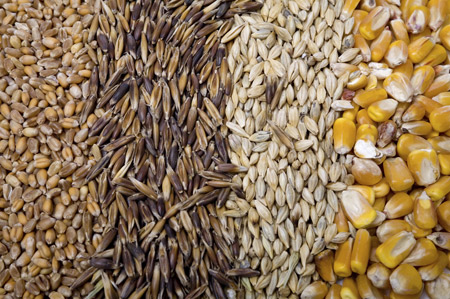A perspective on world grain demand
Category: Grains
 (AgProfessional) – There are at least three components that make up the growth in world grain demand. One is the change in population. Assuming that the amount of grain consumer per person holds steady, the increase in total grain demand coincides with the increase in the number of people. The second is the amount consumed by each person. This growth is often related to income as people with higher incomes tend to consume more grain, either directly or through the production and consumption of livestock products. And thirdly, at least in recent years, there is the use of grain to produce fuels. The increase in ethanol production in the U.S. over the last decade is a clear example of this growth factor. It may be useful to evaluate how these factors have changed over the years so we can make some sense of future demand growth.
(AgProfessional) – There are at least three components that make up the growth in world grain demand. One is the change in population. Assuming that the amount of grain consumer per person holds steady, the increase in total grain demand coincides with the increase in the number of people. The second is the amount consumed by each person. This growth is often related to income as people with higher incomes tend to consume more grain, either directly or through the production and consumption of livestock products. And thirdly, at least in recent years, there is the use of grain to produce fuels. The increase in ethanol production in the U.S. over the last decade is a clear example of this growth factor. It may be useful to evaluate how these factors have changed over the years so we can make some sense of future demand growth.
World population growth has slowed significantly. The rate of increase was about 1.6% per year in the early 1990s, slowing to 1.25% in the early 2000s and is currently near 1.12%. By 2020 the rate of growth is expected to drop below 1 percent per year, according to the United Nations Population Bureau. The world still adds about 78 million people per year, but in the early 1990s that figure was close to 88 million. The population growth rate is still very high in Africa, near 2.3 % per year, but population growth in near zero in many developed countries and is actually negative in Japan. The current yearly increase in population adds about 25 million tonnes to world grain demand.
It is a little harder to pin down changes in world per capita grain consumption. World per capita grain consumption in 2012/13 works out to 714 pounds. The tight supplies and high prices this year are causing a reduction in per capita consumption from 723 pounds in 2011/12. The per capita calculation just takes total consumption and divides it by population. There is no way to separate out the amount of grain consumed directly, the amount consumed through livestock, and the amount used for other non-food products, such as ethanol, etc.
There are huge differences in per capita consumption among the countries and regions. For example, per capita consumption in India, most of which is consumed directly, is about 380 pounds. Compare that to U.S. per capita consumption of nearly 2,300 pounds, with very little direct consumption. World per capita grain consumption increased by roughly 6 percent over the last decade. Putting the annual increase at about 0.6 percent, boosting world grain demand by about 13 million tonnes.
But to get a better idea of how much demand will grow in the future we may need to factor out the increase during the last decade that is attributable to ethanol production, at least in the U.S. If we reduce U.S. per capita grain consumption by the amount of corn used for grain, allowing for the fact that 30 percent of that grain used for ethanol returns as livestock feed, U,S, per capita grain consumption drops to about 1,600 pounds and world per capita use is around 690 pounds. Total world grain consumption is nearly 10 percent lower than when the ethanol use is included. If the amount of grain used for ethanol holds about steady in the future, in contrast to the huge increase recorded during the last decade, the food-based increase in world grain demand is much smaller, coming in at about 7 million tonnes per year.
If we combine the impact of the rising population with the food-based increase in per capita consumption, world grain demand increases by about 32 million tonnes per year. That translates into an increase of about 1.4 percent. The trend growth in world grain yields is currently calculated at about 1.3 percent, so a “normal” increase in yields would very nearly keep pace with the growth in demand, limiting the amount of additional land that needs to be brought into production.
Of course there are huge differences in the growth in food demand in the various countries and regions of the world. Demand in China is rising much faster than it is in many other areas as diets in China improve significantly. Per capita grain use is rising at a faster rate in Africa than it is in India and per capita demand is falling in some of the developed countries, such as Japan, the EU, and Canada. If recent trends in production and consumption continue, Countries in the Middle East, Africa, and Latin America, excluding Argentina and Brazil, will have to boost grain imports significantly to satisfy their growing grain needs.




